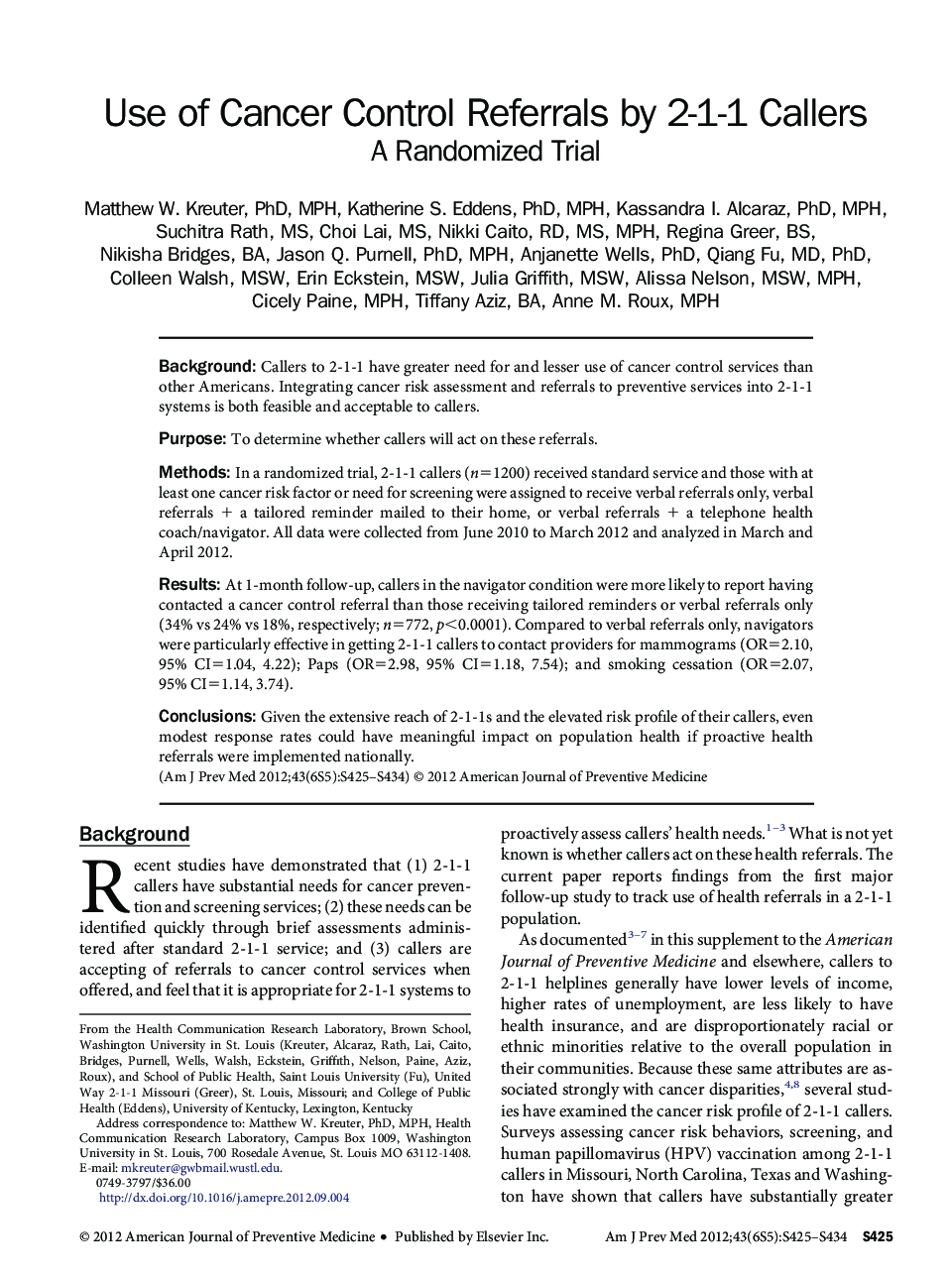| Article ID | Journal | Published Year | Pages | File Type |
|---|---|---|---|---|
| 4192820 | American Journal of Preventive Medicine | 2012 | 10 Pages |
BackgroundCallers to 2-1-1 have greater need for and lesser use of cancer control services than other Americans. Integrating cancer risk assessment and referrals to preventive services into 2-1-1 systems is both feasible and acceptable to callers.PurposeTo determine whether callers will act on these referrals.MethodsIn a randomized trial, 2-1-1 callers (n=1200) received standard service and those with at least one cancer risk factor or need for screening were assigned to receive verbal referrals only, verbal referrals + a tailored reminder mailed to their home, or verbal referrals + a telephone health coach/navigator. All data were collected from June 2010 to March 2012 and analyzed in March and April 2012.ResultsAt 1-month follow-up, callers in the navigator condition were more likely to report having contacted a cancer control referral than those receiving tailored reminders or verbal referrals only (34% vs 24% vs 18%, respectively; n=772, p<0.0001). Compared to verbal referrals only, navigators were particularly effective in getting 2-1-1 callers to contact providers for mammograms (OR=2.10, 95% CI=1.04, 4.22); Paps (OR=2.98, 95% CI=1.18, 7.54); and smoking cessation (OR=2.07, 95% CI=1.14, 3.74).ConclusionsGiven the extensive reach of 2-1-1s and the elevated risk profile of their callers, even modest response rates could have meaningful impact on population health if proactive health referrals were implemented nationally.
